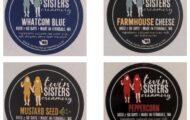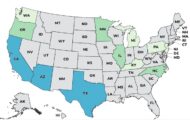A Cornell University study titled “One Man’s Tall is Another Man’s Small: How the Framing of Portion Size Influences Food Choice” looks at descriptive food size labels and their effect on obesity. The food industry uses normative labels such as “super-size” to describe portion sizes and we don’t know if consumers think that information is objective or subjective. And if consumers use those labels as information to choose products, regulations about those names could reduce consumption.
 For example, Starbucks “short” beverages are 8 ounces, while “tall” is 12 ounces. A McDonald’s “large” soft drink is 32 ounces, and a “medium” is 21 ounces and a “child” portion is 12 ounces. Researchers wondered if normative labels matter, especially when the actual size information is also available. Since food retailers are often accused of “marketing obesity”, how is consumer choice influenced by these labels?
For example, Starbucks “short” beverages are 8 ounces, while “tall” is 12 ounces. A McDonald’s “large” soft drink is 32 ounces, and a “medium” is 21 ounces and a “child” portion is 12 ounces. Researchers wondered if normative labels matter, especially when the actual size information is also available. Since food retailers are often accused of “marketing obesity”, how is consumer choice influenced by these labels?
Research has found that people do not accurately use visual cues to determine volume of food. A person eating a small portion from a small plate is more satisfied than a person consuming a small portion from a large plate.
The researchers labeled 8-ounce, 12-ounce, and 16-ounce portions with different normative names: small, medium, and large, at different restaurants. They found that people use those labels as objective information about the size of the portion, even though they can see the size of the portion offered. In other words, consumers can be misled about portion size based on normative labels. They change their satiation point according to labels on foods, not on whether they are actually full while eating.
The study ended by saying, “it appears that consumers are responding to the labels primarily for the rule-of-thumb informational content they provide. If this is indeed the case, size labels may mislead casual consumers about the true size of the portions they are purchasing and consuming. This provides some rationale for government guidelines suggesting standard size-labels for foods so the information gleaned by the consumer is congruent with the true size of the portion.
Suggesting normative names could have substantial effects on consumption behavior, potentially leading to healthier consumption volumes. With the tremendous increase in obesity experienced in the US over the last decades, there may be a substantive role for government in creating an atmosphere where a casual consumer may be pointed toward healthier portions without removing individual choice and without restricting a firm’s ability to market whatever quantities they wish.”




